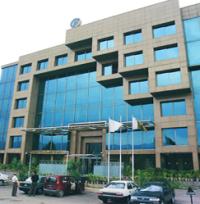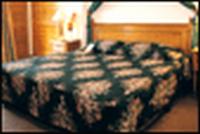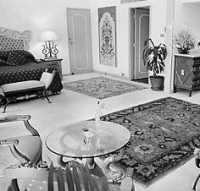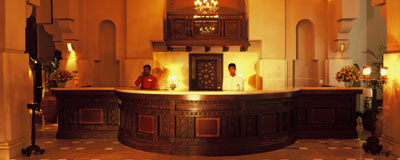 Tourism Sites
Tourism Sites About 966 km from Karachi and more or less right in the centre of the country lies the ancient city of Multan. Multan, the 'City of Pirs and Shrines' is a prosperous city of bazaars, mosques, shrines and superbly designed tombs. It is also a city of dust, summer heat and beggars. It has a long history. Alexander the Great added it to his list of Indus conquests.
In 641 AD Xuang Tzang found it 'agreeable and prosperous' - Mohammad Bin Qasim obviously agreed, he was the next to conqueror Multan in 712 AD. Mahmud of Ghazni invaded in 1006, Timurlane in 1398. In the 16th century it was the Moghuls turn, followed by the Sikhs in 1752 and the British in 1849.
The old city has narrow colourful bazaars full of local handicrafts and narrow winding lanes. There are many places of historical, cultural and recreational interest in the city.
Places Worth Visiting Multan Fort Multan Fort was built on a detached, rather high mound of earth separated from the city by the bed of an old branch of River Ravi. There is no Fort now as it was destroyed by the British Garrison, which was stationed there for a long time but the entire site is known as the Fort. Nobody knows when Multan Fort came into being but it was there and it was admired and desired by kings and emperors throughout centuries.
It was considered as one of the best forts of the sub-continent from the defence as well as architectural points of view. When intact its circumference was 6,600 feet or, say, about one and a half mile. It had 46 bastions including two flanking towers at each of the four gates named as the De, Sikki, Hareri and Khizri Gate.
When it was intact the Fort consisted of a hexagonal wall from forty to seventy feet high, the longest side of which faced the northwest and extended for 600 yards, and which isolated it from the town. A ditch twenty-five feet deep and forty feet wide was on the side of the wall, behind which was a glacis exhibiting a face of some eighteen feet high, and so thick as to present an almost impregnable rocky mound. Within the fort, stood the citadel. The walls were flanked by thirty towers, and enclosed numerous houses, mosques, a Hindu temple of high antiquity, and a Khan's palace, the beauty of which was severely damaged by the battering it got from the guns of Ranjeet Singh in 1818.
Once this was the position of the Multan Fort, but during the British occupation everything was lost and finished forever.
Mausoleum of Hazrat Baha-ud-Din Zakaria Standing at the north-eastern fringe of the ancient fort of Multan, is the eternal abode of Al-Sheikh Al-Kabir Sheikh-ul-Islam Baha-ud-Din Abu Muhammad Zakaria Al-Qureshi Al-Asadi, one of the greatest saints of the Suhrawardiya Silsila and one of the most distinguished disciples of Sheikh Al-Shuyukh Shahab Al-Din Suhrawardy. He was the founder of Suhrawardiya Silsila in the Sub-Continent. He was born in 1170 AD.
The prime attraction of the Fort area is the Mausoleum generally known as Bahawal Haq (the ornament of the Faith). The dome of the Mausoleum is visible from miles and dominate the skyline of Multan.
Sheikh Baha-ud-Din Zakariya known as Bahawal Haq was born at Kot Kehror a town of District Laiah near Multan, around 1170 AD. For fifteen years he went from place to place to preach Islam and after his wanderings Bahawal Haq settled in Multan in 1222 AD. This great man passed away in 1267 AD. The Mausoleum is a square of 51 feet 9 inches, measured internally. Above this is an octagon, about half the height of the square, which is surmounted by a hemispherical dome. The Mausoleum was almost completely ruined during the siege of 1848, but was soon afterwards restored by the Muslims.
Mausoleum of Shah Rukn-i-Alam The tomb of Shah Rukn-i-Alam grandson of Shaikh Bahauddin Zakaria, which was built between 1320 and 1324, is an unmatched pre-Moghul masterpiece. The Mausoleum of Rukn-i-Alam is the glory of Multan.
From whichever side the city is approached, the most prominent thing that can be seen from miles all around is a huge dome. This dome is the Shrine of Sheikh Rukn-ud-Din Abul Fath commonly known by the title Rukn-i-Alam (pillar of the world). The tomb is located on the southwest side of the Fort premises. This elegant building is an octagon, 51 feet 9 inches in diameter internally, with walls 41 feet 4 inches high and 13 feet 3 inches thick, supported at the angles by sloping towers. Over this is a smaller octagon 25 feet 8 inches, on the exterior side, and 26 feet 10 inches high, leaving a narrow passage all round the top of the lower storey for the Moazzan, or public caller to prayers. The whole is surmounted by hemispherical dome of 58 feet external diameter. The total height of the building, including a plinth of 3 feet, is 100 feet. As it stands on the high ground, the total height above the road level is 150 feet.
Besides its religious importance, the mausoleum is also of considerable archaeological value as its dome is reputed to be the second largest in the world after 'Gol Gumbad' of Bijapur (India), which is the largest. The mausoleum is built entirely of red brick, bounded with beams of Shisham wood, which have now turned black after so many centuries. The whole of the exterior is elaborately ornamented with glazed tile panels, stringcourses and battlements. Colors used are dark blue, azure, and white, contrasted with the deep red of the finely polished bricks. The tomb was said to have been built by Ghias-ud-Din Tughlak for himself, but was given up by his son Muhammad Tughlak in favor of Rukn-i-Alam, when he passed away from this world during 1330 AD.
Mosques Multan also boasts of having some of the oldest mosques, which were once considered as the jewels of the city. These mosques now remind us of the glorious past of Multan as it was governed by Muslims for more than a thousand years
Jamia Mosque The first mosque ever built in Multan was the Jamia Mosque, which was constructed on the orders of Mohammad Bin Qasim. Ruins of this mosque were visible till 1954 at Qasim Bella which have now been washed away by the repeated floods of the river Chenab.
Eid Gah Mosque This grand mosque of Multan is located on the main Multan-Lahore highway in the Northeast of the city. It was built in 1735 AD by Nawab Abdul Samad Khan when he was the governor of Multan. It is a very spacious mosque provided with a vast courtyard and a huge prayer chamber measuring two hundred and fifty feet long and fifty-four feet broad crowned by seven domes. Its exterior was faced with glazed blue tiles and interior was ornamented with colorful mosaics. After independence it was found insufficient to accommodate the increased number of people so its courtyard was enlarged further.
Back

 Hotel offers special packages for groups and conferences.
Hotel offers special packages for groups and conferences.















































